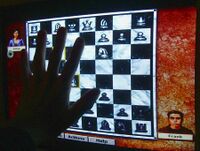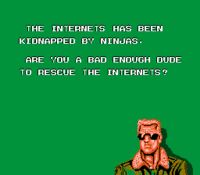World Wide Web Consortium
From it's humble beginnings in the porn industry, the Web Web Web Consortium (W3C) has grown from strength to strength to become the world's largest and most cumbersome organisation with the prime objective of producing nothing but a bunch of documents that no-one can be bothered reading anyway. Many of these documents, otherwise known as RFC's (Requests for Criticism) are printed by dumb managers and account for more than 30% of the worlds paper-based office waste. On the other hand, they do make good airplanes.
History[edit]
Once upon a time, the founders of Sizzle.com, Playboy.com, and Netscape along with some representatives from Microsoft and Sun came together and talked about how they could "co-operate" and ensure that internet porn is accessible to all people who use the web. In 1997 the HTML 4.0 standard was finalised, it was a running success and everyone was happy. The document was released, everyone shook hands and then walked away and looked for excuses not to follow it, although they all agreed they should add the suffix 4.0 to the end of their product lines, and left it at that.
In 2001, the great browser wars had come to an untimely climax. The two key parties, Microsoft and Netscape, had decided to add new features and ignore the specification, stating that their ignorance of the specification is what made their product better than the competition. By this time, key members in the Internet porn industry had become very angry and decided that "there can be only one". So a small bomb was placed in front of Marc Andreeson's house and was detonated. With limbs missing, he surrendered and handed all of his property to AOL, who were the in charge of the Internet porn industry at the time.
In 2003, new standards were introduced included HTML5 and CSS3. These standards expect to be implemented by Microsoft on December 21st, 2012, or when the world ends - whichever is later. However, some other parties have agreed to included the standards by 2015, only because many of them are very vague and boring, thanks to the post-editing done by a team of Microsoft lawyers as part of their "make sure they can't do anything before we do" campaign. Bill Gates denounced the border-radius feature that comes with CSS3 because it "makes pages look too girly." Paris Hilton disagreed.
Members[edit]
- Bill Gates, Founder of Microsoft
- Marc Andreesen, Founder of Netscape
- Steve Wozniak, Apple Whack-job
- Steve Urkel, completely fictional nerd
- Jenna Jameson, publicity
- Paris Hilton, publicity
- Chuck Norris, security
Location[edit]
Current location is kept top secret, however some say that it is located somewhere on the Internet.
| ||||||||||||||||||||||||



